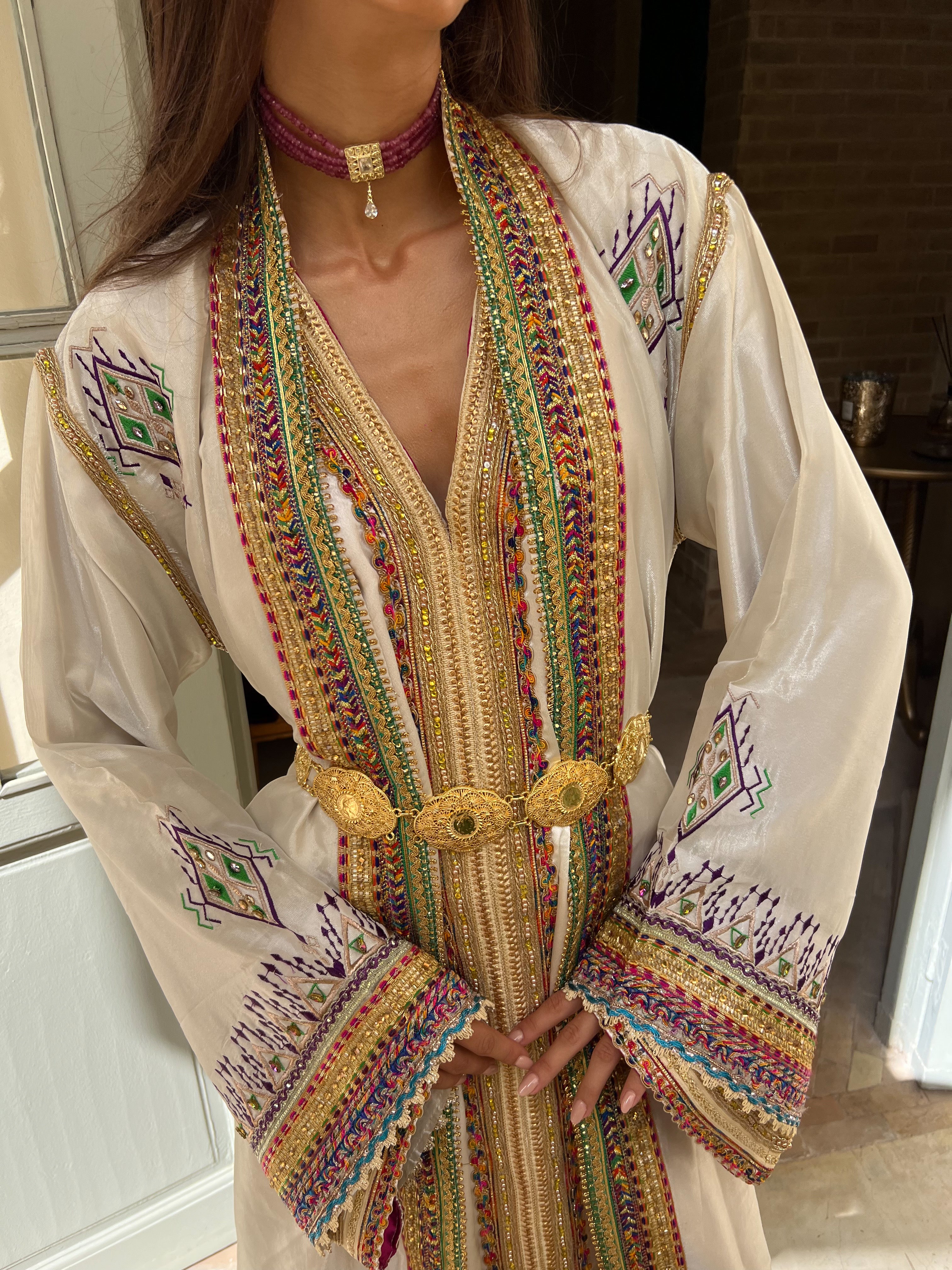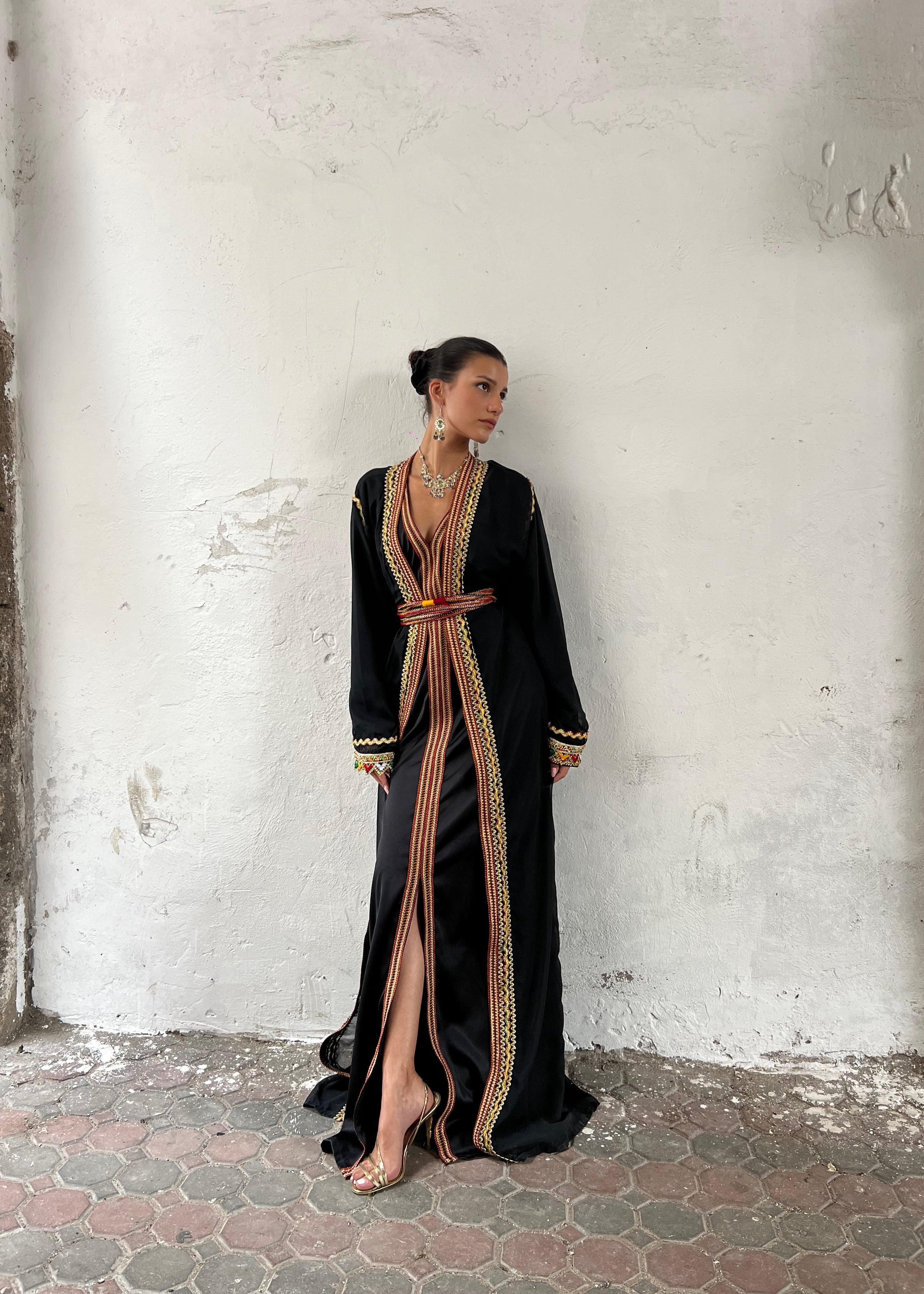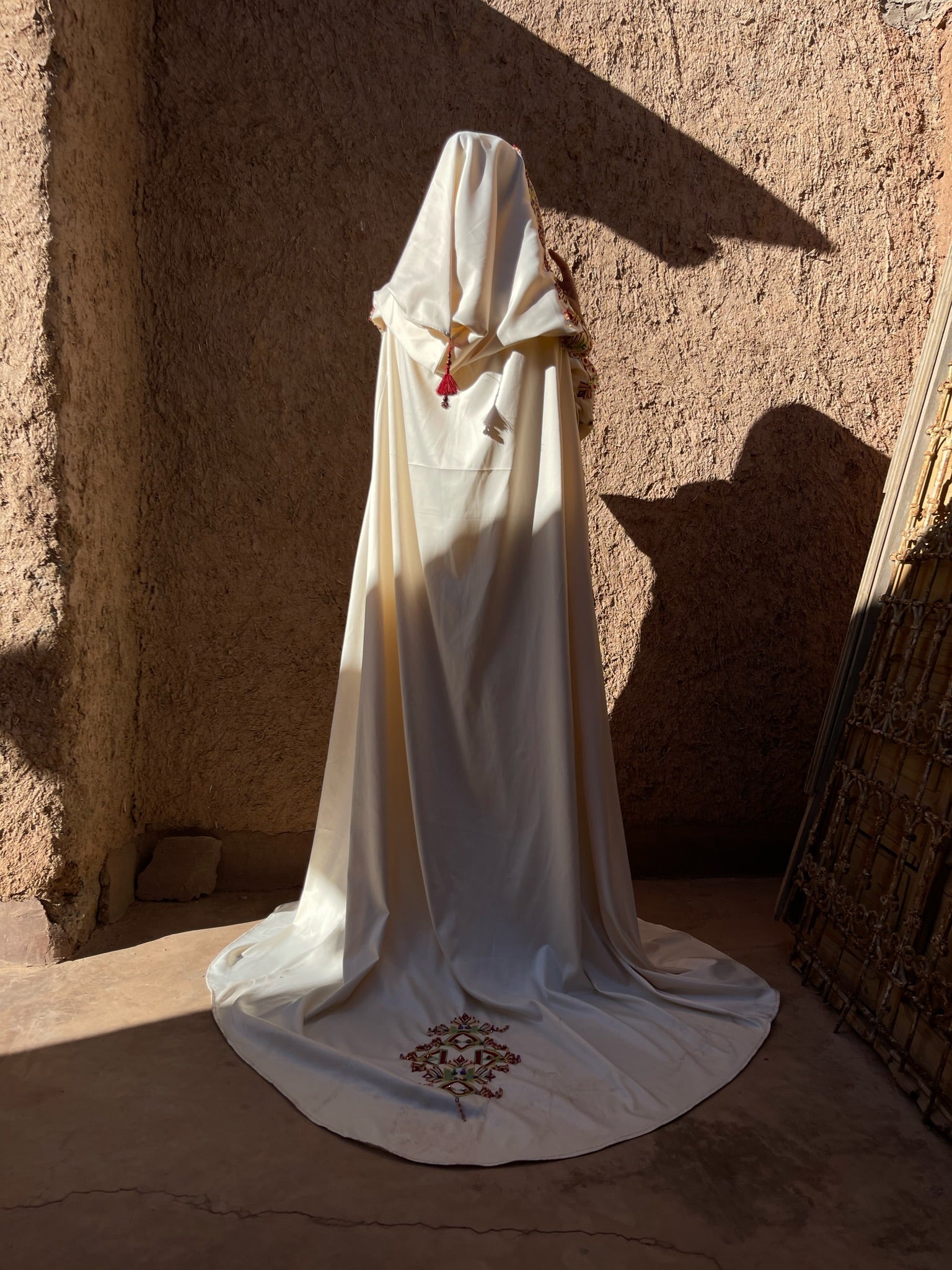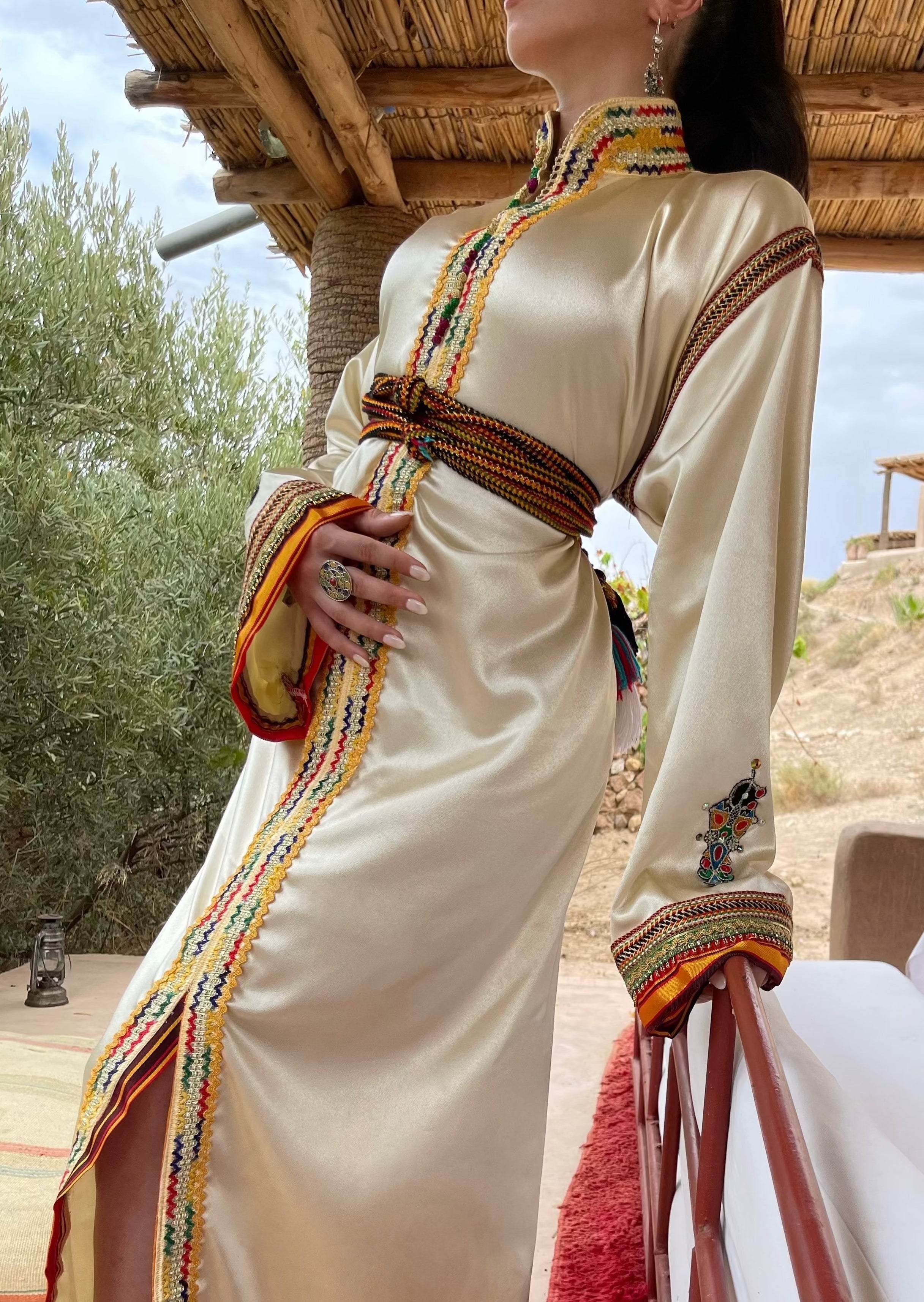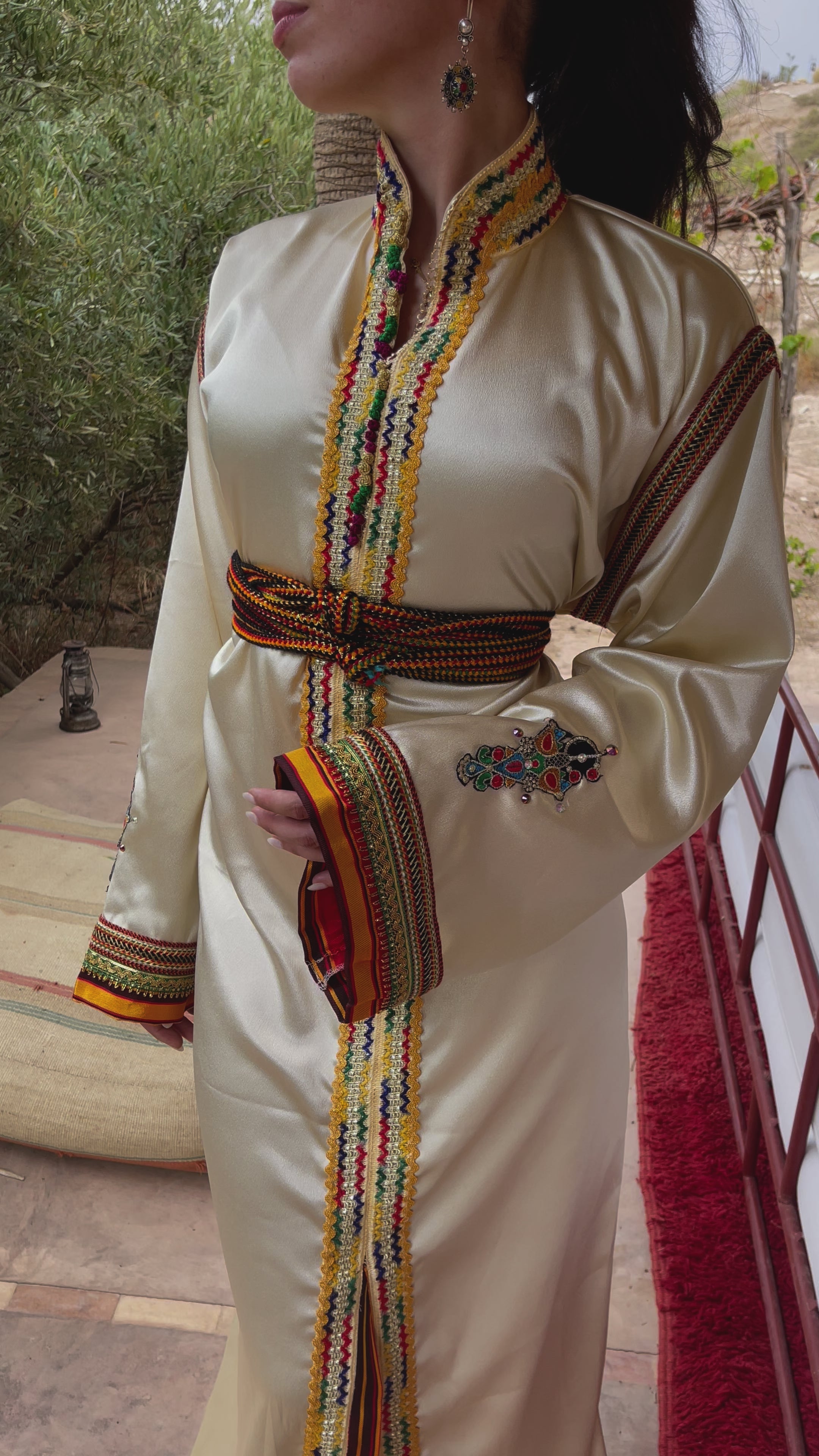Origins of Berber Dresses
The Berbers, also called Imazighen, are the original inhabitants of North Africa, with a history that dates back several millennia before the Christian era. Traditional Berber dresses have their roots in the ancient clothing customs of the Berber tribes that occupied regions ranging from the Moroccan Atlas to the Sahara deserts.
The first Berber robes were made from sheep or goat wool, woven by hand. The wool was spun and dyed with natural dyes extracted from local plants, which gave the fabrics vibrant and long-lasting colors. These robes served not only as clothing but also as protection against the harsh climates of the mountains and deserts.
Cultural Significance
Berber dresses are more than just clothing; they are expressions of cultural identity and ethnic pride. Each Berber region and tribe has developed its own distinctive styles of dress, reflecting their unique environment, beliefs, and customs.
Atlas Robes: In the Atlas Mountains, robes are often made of thick wool, decorated with geometric embroidery and bright colors. They are designed to provide maximum warmth and protection from the cold mountain temperatures.
Saharan Robes: The robes of the Saharan Berbers, like the Tuareg, are lighter, made from cotton or linen, and often dyed indigo. These robes, called "tagelmust" or "targui", are designed to protect against the intense heat and sandstorms of the desert.
